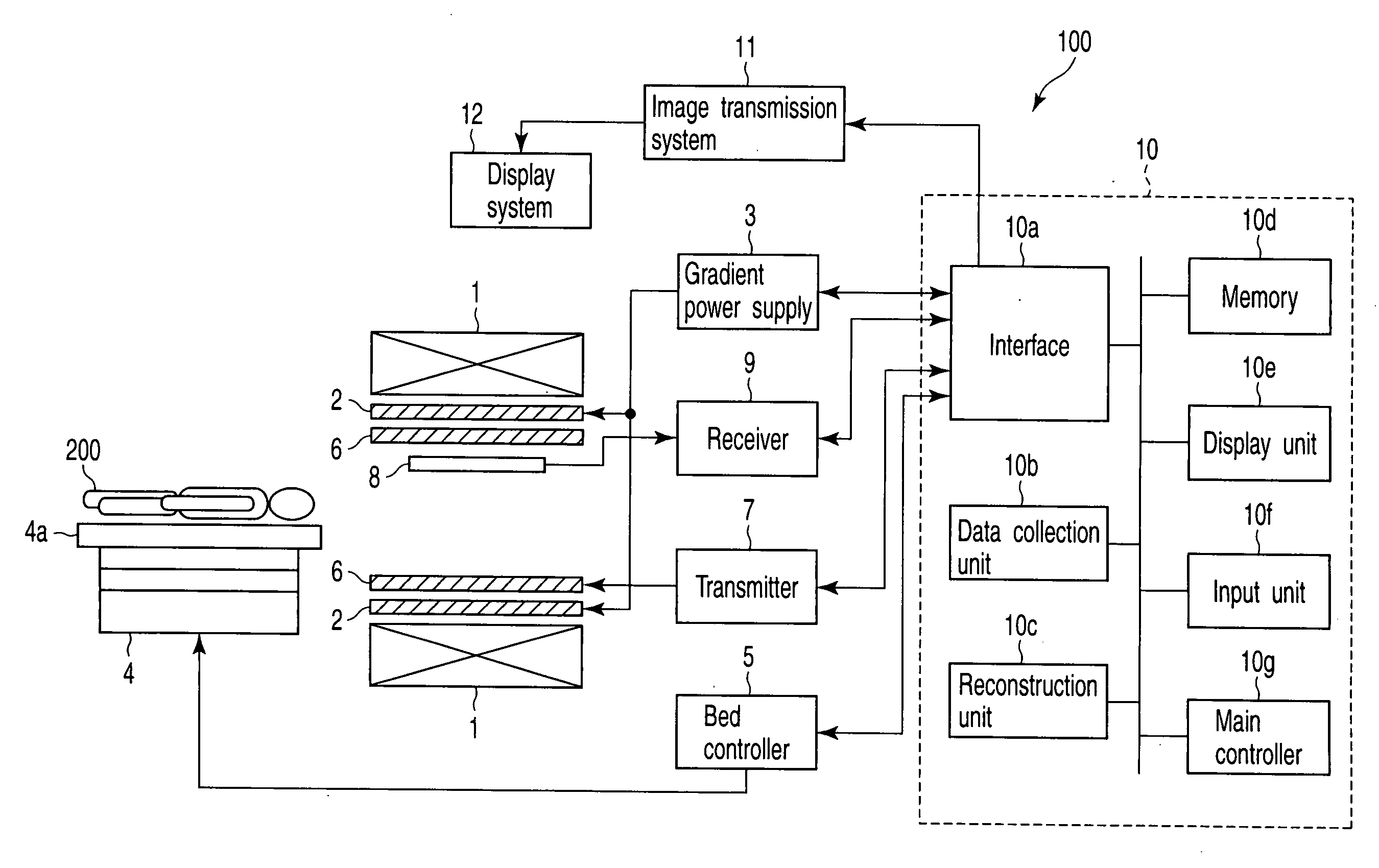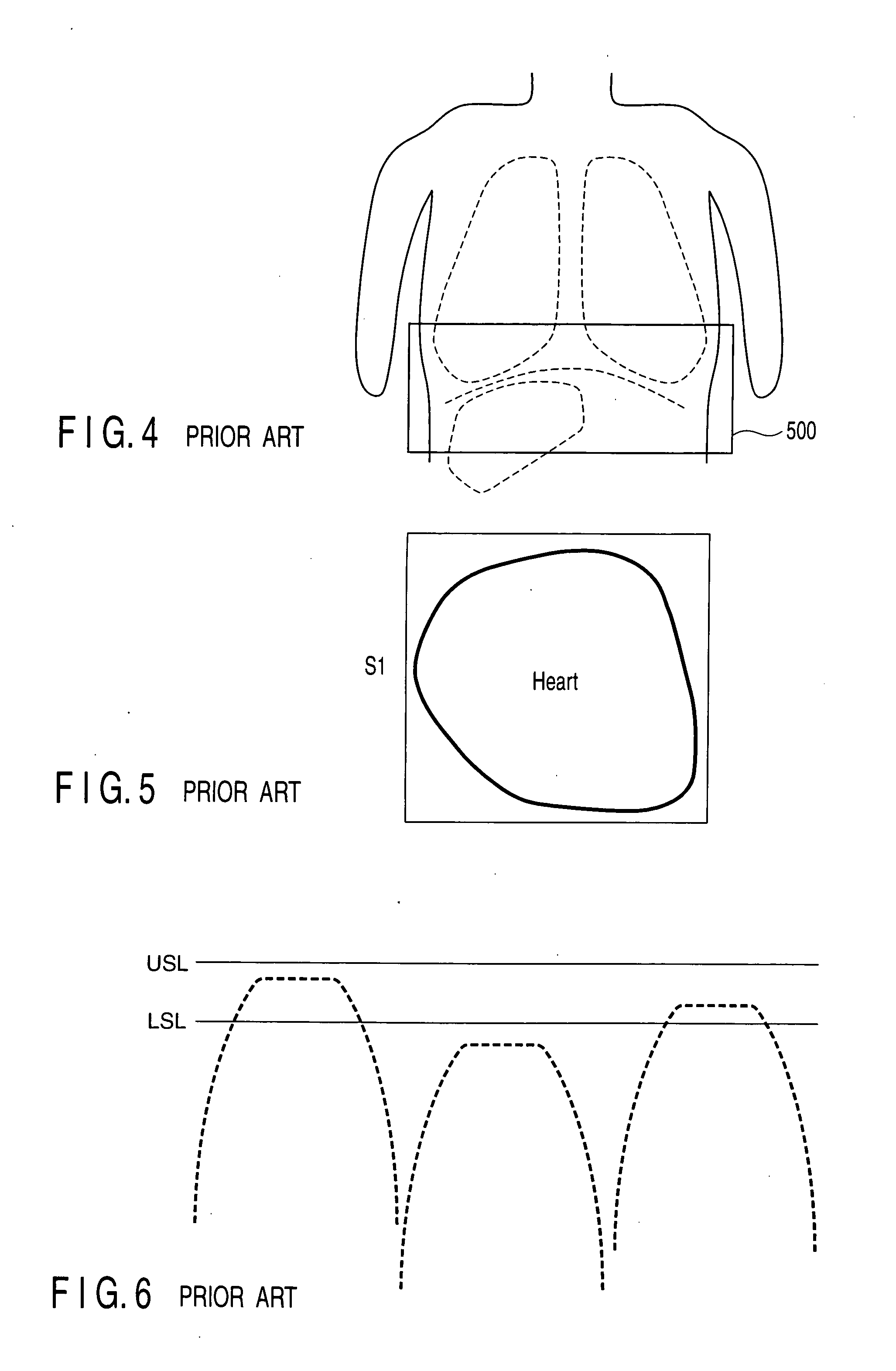Magnetic resonance imaging apparatus and control method thereof
a magnetic resonance imaging and magnetic resonance technology, applied in the field of magnetic resonance imaging apparatus, can solve the problems of insufficient spatial resolution, inability to terminate examination, and long imaging tim
- Summary
- Abstract
- Description
- Claims
- Application Information
AI Technical Summary
Benefits of technology
Problems solved by technology
Method used
Image
Examples
first embodiment
[0069]FIG. 9 shows the configuration of a magnetic resonance imaging (MRI) apparatus, generally indicated at 100, according to a first embodiment. The MRI apparatus 100 includes a static field magnet 1, a gradient coil 2, a gradient power supply 3, a bed 4, a bed controller 5, a transmission RF coil 6, a transmitter 7, a receiving RF coil 8, a receiver 9, a computer system 10, a image transmission system 11 and a display system 12.
[0070]The static field magnet 1 is formed in the shape of a hollow cylinder and adapted to generate a uniform static magnetic field within its inside shape. As the static field magnet 1 use is made of a permanent magnet, a superconducting magnet, or the like.
[0071]The gradient coil 2 is formed in the shape of a hollow cylinder and placed inside the static field magnet 1. The gradient coil 2 is a combination of three coils each corresponding to a respective one of the three mutually orthogonal X, Y and Z axes. When the three coils are individually supplied ...
fourth embodiments
Second to Fourth Embodiments
[0106]Meanwhile, in the first embodiment, collection of the NMR signal for acquisition of positional information is performed only once per heart rate. That is, the respiratory level is monitored only once or twice per respiration as shown in FIG. 30, the subject may not recognize a change in respiration even if the subject is informed of the monitored respiratory level alone. That is, a interval of updating information acquired in the above-explained cycle may be too long as a interval of updating information required to control the respiratory level. In other words, a feedback time constant in respiratory level control is long.
[0107]Under such circumstances, it can be considered that adjustment of the respiratory level by the subject based on the monitored respiratory level is similar to a case where the feedback time constant in automatic control is long, and under-control or over-control may possibly occur.
[0108]Thus, second to fourth embodiments that...
second embodiment
[0113]A main controller 10g in the second embodiment includes a plurality of functions mentioned below. It is to be noted that the plurality of functions can be realized by allowing a processor included in the main controller 10g to execute a program.
[0114]As one of the functions, each relevant section is controlled to enable a data collection unit 10b to obtain an NMR signal required to detect a respiratory level of the subject 200 (which will be referred to as a monitoring NMR signal hereinafter). As one of the functions, the respiratory level of the subject 200 is detected based on the monitoring NMR signal acquired by the data collection unit 10b. As one of the functions, each relevant section is controlled to enable the data collection unit 10b to collect an NMR signal required to reconstruct an image (which will be referred to as a reconstruction NMR signal hereinafter) when the respiratory level detected based on the monitoring NMR signal falls within an allowable range. As o...
PUM
 Login to View More
Login to View More Abstract
Description
Claims
Application Information
 Login to View More
Login to View More - R&D
- Intellectual Property
- Life Sciences
- Materials
- Tech Scout
- Unparalleled Data Quality
- Higher Quality Content
- 60% Fewer Hallucinations
Browse by: Latest US Patents, China's latest patents, Technical Efficacy Thesaurus, Application Domain, Technology Topic, Popular Technical Reports.
© 2025 PatSnap. All rights reserved.Legal|Privacy policy|Modern Slavery Act Transparency Statement|Sitemap|About US| Contact US: help@patsnap.com



